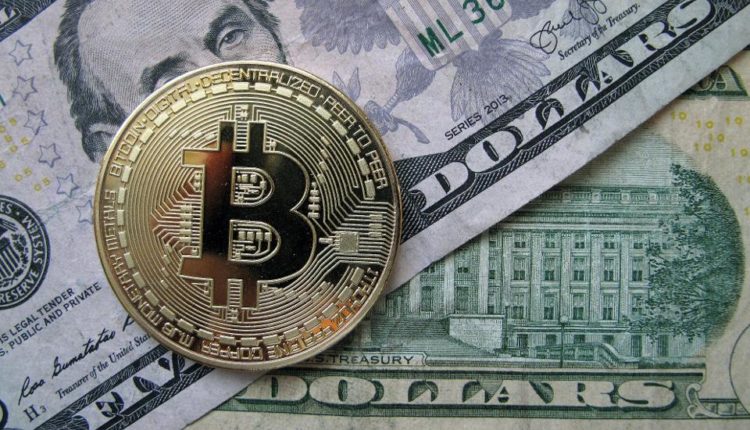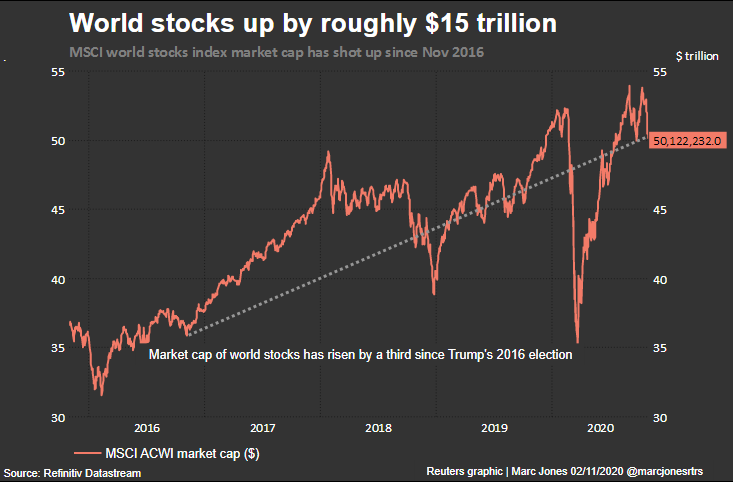Shares and bonds gain as Biden inches toward victory
Europe and Asia’s stock markets climbed and bonds extended their rally on Thursday as Democrat Joe Biden inched closer to winning the White House and Britain’s central bank become the latest to shovel in additional stimulus.
Biden is now favoured to oust Donald Trump after victories in Michigan and Wisconsin, but Democrats are unlikely to win the Senate. That led investors to wager on a policy gridlock that would prevent greater regulation.
With the Bank of England adding 150 billion pounds ($195.20 billion) to its bond-buying programme as Europe’s markets opened, the FTSEurofirst was up 0.8% and Italy’s five-year bond yields fell below zero. [EUR/GVD]
Asian stocks climbed 2% overnight to reach their highest since February 2018.
Japan’s Nikkei rose 1.7% to a more than nine-month top, South Korea gained 2.4%, and Chinese blue chips added 1.3% on hopes a Biden White House would ease up on tariffs.
A split U.S. Congress, while potentially limiting fiscal stimulus, would have some advantages, said Michele Pedroni, a fund manager at Decalia Asset Management in Geneva.
“The big bad wolf of regulation and taxes is further away from the door and many, who have de-risked into the event, will be forced to re-risk,” she said.
E-Mini futures for the S&P 500 rose 1.6% and NASDAQ futures 2% after both real-time markets had surged on Wednesday as the election results unfolded.
Amazon, Facebook and Google have all soared 6% to 8%.
Both Trump and Biden have paths to 270 Electoral College votes as states tallied mail-in ballots. Biden remained optimistic on winning while Trump filed lawsuits and demanded recounts.
The divided Congress that looked likely to emerge was “often seen as the ‘goldilocks scenario’ for financial markets — no radical policy changes and the Fed providing ample liquidity to try to support the economy and financial markets when required,” said Randal Jenneke, a portfolio manager at T. Rowe Price.
BONDS WIN BIG
Bond markets assumed a divided government would greatly reduce the chance of debt-funded spending on stimulus and infrastructure next year, and thus less bond supply.
That saw 10-year Treasury yields fall to 0.74%, having touched a five-month top of 0.93% at one stage on Wednesday. The overnight drop of 11 basis points was the largest single-day move since March’s COVID-19 panic.
The diminished chance of U.S. fiscal stimulus will put pressure on central banks globally to inject liquidity.
The Bank of England added 150 billion pounds to a total target of 895 billion as it sought to cushion Britain’s struggling economy against a second coronavirus lockdown.
In addition, the Federal Reserve will probably be called on, too, said Chris Beauchamp, chief market analyst at IG.
“The Fed in particular will have to take up its QE role again with a weary sigh, in order perhaps to provide yet another bridge to the future when, hopefully, a government stimulus package will have been agreed,” Beauchamp said.
The prospect restrained the dollar, after a wild ride overnight. The dollar index was last at 93.362, nearer Wednesday’s low of 93.070 than the top of 94.308.
The dollar also settled back to 104.38 yen after rising as high as 105.32 overnight. The euro held at $1.1734, up from a low of $1.1602.
Sterling recovered after bumpy ride on Wednesday amid troubles of its own. Little sign of a breakthrough on Brexit has appeared, and the Telegraph newspaper had earlier reported the BoE was considering a move into negative interest rates.
The pound gained to $1.3023, still down from an overnight peak of $1.3139.
All the talk of policy easing put a floor under gold prices, leaving the metal up at $1,909.1 an ounce.
Oil prices ran into some profit-taking. They had jumped overnight on speculation a deadlocked U.S. government would be unable to pass major environmental legislation that favoured other forms of energy. [O/R]
U.S. crude slipped to $38.37 a barrel, though that followed a rise of 4% on Wednesday. Brent crude futures fell 80 cents to $40.43.




